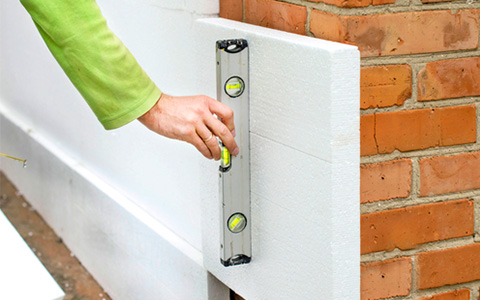
If your current AC system is older than 10 years old, it might be running R-22 Air Conditioning refrigerant which is considered an ozone-depleting substance and it is bad for the environment over the long term.
Nowadays, a new industry of eco friendly home building has grown up and a whole host of technological innovations have created an arsenal of eco friendly building materials and techniques.
1) Tankless Water Heaters
Tankless water heaters, also known as demand-type or instantaneous water heaters, provide hot water only as it is needed. They don’t produce the standby energy losses associated with storage water heaters, which can save you money.
For homes that use 41 gallons or less of hot water daily, demand water heaters can be 24%–34% more energy efficient than conventional storage tank water heaters. They can be 8%–14% more energy efficient for homes that use a lot of hot water — around 86 gallons per day. You can achieve even greater energy savings of 27%–50% if you install a demand water heater at each hot water outlet.
ENERGY STAR® estimates that a typical family can save $100 or more per year with an ENERGY STAR qualified tankless water heater.


2) Ductless Heating & Cooling
Ductless heating and cooling is a great way to achieve total indoor comfort in your home yet still have an extremely energy efficient, eco-friendly home. Mitsubishi ductless heat and AC systems have some of the best energy efficiency rating in the industry!
Additionally, ductless systems are whisper quiet and totally comfortable. Our customers often say that they don’t even know that the unit is on!
3) High Efficiency Lighting
The light-emitting diode (LED) is one of today’s most energy-efficient and rapidly-developing lighting technologies. Quality LED light bulbs last longer, are more durable, and offer comparable or better light quality than other types of lighting.
Residential LEDs — especially ENERGY STAR rated products — use at least 75% less energy, and last 25 times longer, than incandescent lighting.
Also, LEDs emit very little heat. In comparison, incandescent bulbs release 90% of their energy as heat and CFLs release about 80% of their energy as heat.


4) Insulation
Insulating your home is usually the most cost effective way to keep warm, cut your heating bills and reduce your carbon footprint. What’s more there are often government grants available which will contribute towards the cost.
Roughly a third of all the heat lost in an un-insulated home is through the walls. If this is your case, you need to fill the cavities with a material that traps the heat within the house . Insulating cavity walls reduces heat loss and the cost of installation can be recouped very quickly through savings on your fuel bills.
One way to create an eco-friendly home is to eliminate home systems that are using old, outdated technology. For example, upgrading your older air conditioning system to a newer, energy efficient, eco-friendly AC system is a great way to improve on efficiencies, decrease your carbon footprint and to ensure that your AC will continue working without experiencing an emergency “no-ac” service call.
It is important to note that if you AC system uses R-22 as its refrigerant, it is likely that you will not be able to get a recharge of coolant once your system breaks due to the US government imposed phase-out of R-22.


